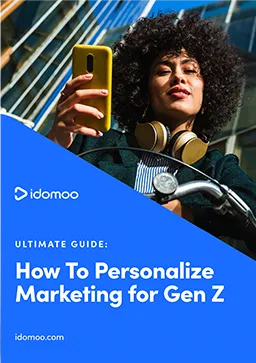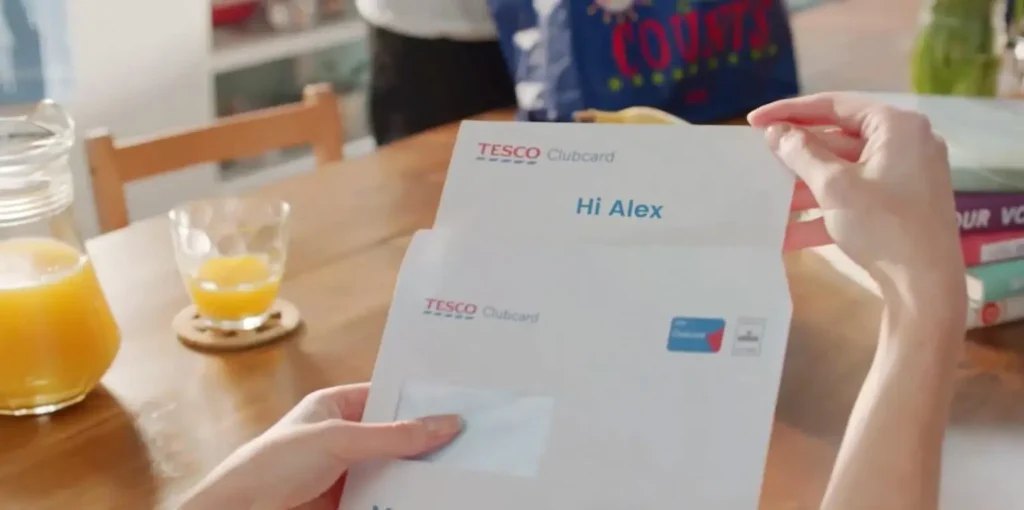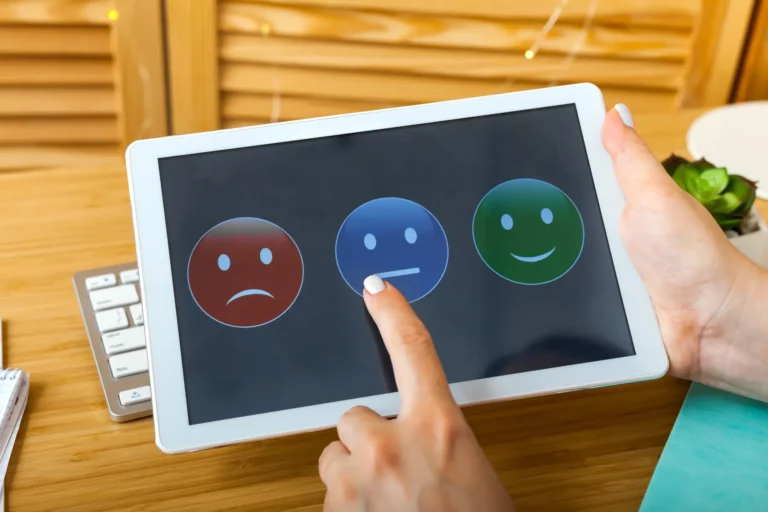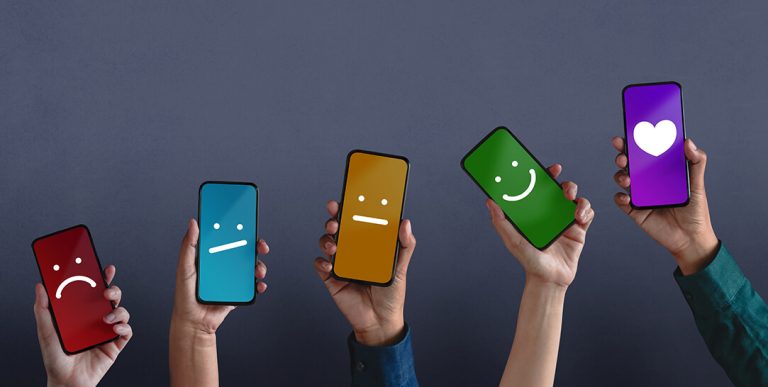The world of marketing is rapidly changing. Today’s consumers are more digital than ever. They’re flitting back and forth between in-person and digital interactions with ease and expecting brands to keep up.
In fact, research shows that since the pandemic, over a third of Americans have made features like buying online and picking up in-store part of their regular routine. Meanwhile, younger consumers like Gen Z don’t think in terms of channels at all. They simply expect brands to deliver a smooth, connected journey.
To meet these changing customer expectations, an omnichannel experience is needed. By implementing an omnichannel marketing strategy, you can give your customers the CX they deserve, whether it’s on social media platforms, via email campaigns and beyond. We dig into the benefits marketers are seeing by using this strategy below.
What Is Omnichannel Marketing?
In the past, brands interacted with customers in channel silos — a multichannel approach where each touchpoint operated independently. But customer preferences have shifted. Customers don’t just stick to one channel anymore. They’re constantly switching from websites to apps and more to complete a single task.
To adapt, brands are embracing omnichannel marketing. Rather than offering fragmented ways to interact, a successful omnichannel strategy connects every customer interaction into one cohesive customer journey. It’s a truly customer-centric approach, ensuring that no matter where or how someone engages with your brand, they get a seamless experience.
This shift isn’t just about convenience. It reflects a cultural movement, especially among younger generations. Dubbed the “tactile renaissance” by some, this trend involves consumers seeking a better blend of online and physical touchpoints.
Post on
Despite being labeled as digital natives, 84% of Gen Z and millennials say they value brands that seamlessly blend technology and physical experiences, and 78% appreciate when brands enhance in-person shopping with digital touchpoints, rather than replace it.
When companies create a CX that meets these expectations, it pays off. Companies with omnichannel customer engagement see sales revenue growth 179% higher, on average, than those without similar strategies. And that’s just the start. Let’s explore some of the other benefits of omnichannel marketing.
Increase Customer Satisfaction With Consistency
A consistent customer experience across different channels is key to customer satisfaction. Today’s customers expect the same experience in-store, online, on-the-go and at home. For example, imagine you visit a retailer’s site. You add a few items to your cart. The next day, you decide to use their app to purchase those items.
With an omnichannel approach done right, your customer experience should continue without any hiccups. It should be just as user-friendly. The brand voice should be instantly familiar. The process should pick up right where you left off.
This kind of consistency can’t stop at transactions. It should extend to routine communications and promotional campaigns, too. Consistent messaging across channels reinforces your brand identity, while a personalized experience deepens the connection.
By using customer data and customer relationship management (CRM) tools, brands can tailor messages to reflect individual customer behavior, making them feel recognized and valued at every step.
Take AAA, for example. A routine renewal notification was made more engaging and relevant through a Personalized Video. It not only featured recognizable branding but also addressed the viewer by name and included their specific renewal date and premium amount.
This approach kept things consistent and elevated the customer interaction into something memorable. And with 78% of consumers wanting brands to use video more in their communications, the message met expectations head-on.
And of course, when customer needs are met, they’re more likely to share their positive brand experience with friends and family — key to boosting your brand reach and improving your bottom line.
Bolster Customer Service
As customers become more tech-savvy, they expect to be able to contact you wherever they are and whenever they want.
Every touchpoint counts, but customer service is especially important. If a customer has a question or issue with your product, they don’t want to waste time remembering your business hours or what types of communication you offer.
Instead, let them choose how they’d like to reach out to you, whether that’s email, SMS, social media or live chat. Here are some ideas to get you started:
- Pay attention to your social media. Reply to questions asked on your Instagram, Twitter and Facebook Messenger.
- Use chatbots for 24/7 support. Automated responses can answer simple questions about your products and services, while customers with more complex pain points can be redirected to a live agent.
- Email customers an Interactive Video that allows them to self-serve on demand.
Self-service options are especially powerful. They allow customers to resolve problems on their own schedule, which helps reduce churn and lightens the load on your support team.
For example, Charter created an Interactive Video that walked new customers through self-installation. Customers could keep the resource, replay it as needed and feel confident completing the process on their own.
With 77% of consumers now seeking Interactive Video content — yet only 30% recalling receiving it — this is a particularly great opportunity to stand out and strengthen relationships.
Wherever you choose to focus your efforts, make it easy for customers to resolve their issues. It shows they can trust you to help them when needed most.
Boost Your Brand Reach
The reach and potential of omnichannel marketing are greater than ever. A seamless strategy lets you connect brick-and-mortar stores, mobile apps, websites, social media and more in ways that amplify your message and make it easy for customers to engage through their preferred channels.
For instance, you can use your physical stores to promote in-app deals, or leverage your mobile app and website to promote discounts on social media. If a consumer sees a deal they like while they’re browsing your website, they can easily tap on it and be directed right to the app where they can make their purchase.

Omnichannel means you reach more people where and when they want you. But more than that, you also give your customers greater opportunities to share and recommend you.
When you send shareable messages across channels, your fans can more easily boast about your brand. If you only send plain text emails, there’s not much for a customer to show off. A great in-person experience, coupled with an innovative mobile interaction, on the other hand, is easily captured and shared.
One great example comes from Southampton Football Club. They created a season-in-review campaign that let fans celebrate their season, including matches attended, goals witnessed and highlights they experienced. Personalized and shareable, the video campaign saw a 16x uplift in engagement compared to non-personalized campaigns.
Video is one of the most engaging ways to connect with customers, but Next Generation Video takes this even further. By adding personalization and interactivity, it treats each viewer as a unique customer, just as they would be when visiting your store or logging into your website.
In short, Personalized Interactive Video doesn’t just grab attention — it makes the experience familiar, fun and personal. It’s a powerful way to extend your reach while keeping interactions consistent and meaningful.
Omnichannel Marketing for Your Business
The old system of one-way messaging through conventional channels is no longer effective and must be replaced with a more comprehensive approach that includes various channels and mediums.
It’s obvious consumers want brand communications to be omnichannel. But that’s not all. They also want it to be visual. Consumers are 58% more likely to buy from businesses that use Next Gen Video. If you’re not using video across channels, you’re not speaking your customers’ language.
So how can you start? By using the latest video technology. Personalize every video to your viewers to keep it relevant. Add interactivity to make the user experience immersive. It’s all possible with our Next Generation Video Platform, which can generate millions of dynamic videos in cinematic quality and real time.
Plus, with Lucas, our AI video creator, you can craft videos at a fraction of the usual time and cost. Built for enterprises, he handles everything from the script to the voiceover to the footage in a matter of minutes.
Ready to try it for yourself? Let’s connect.






